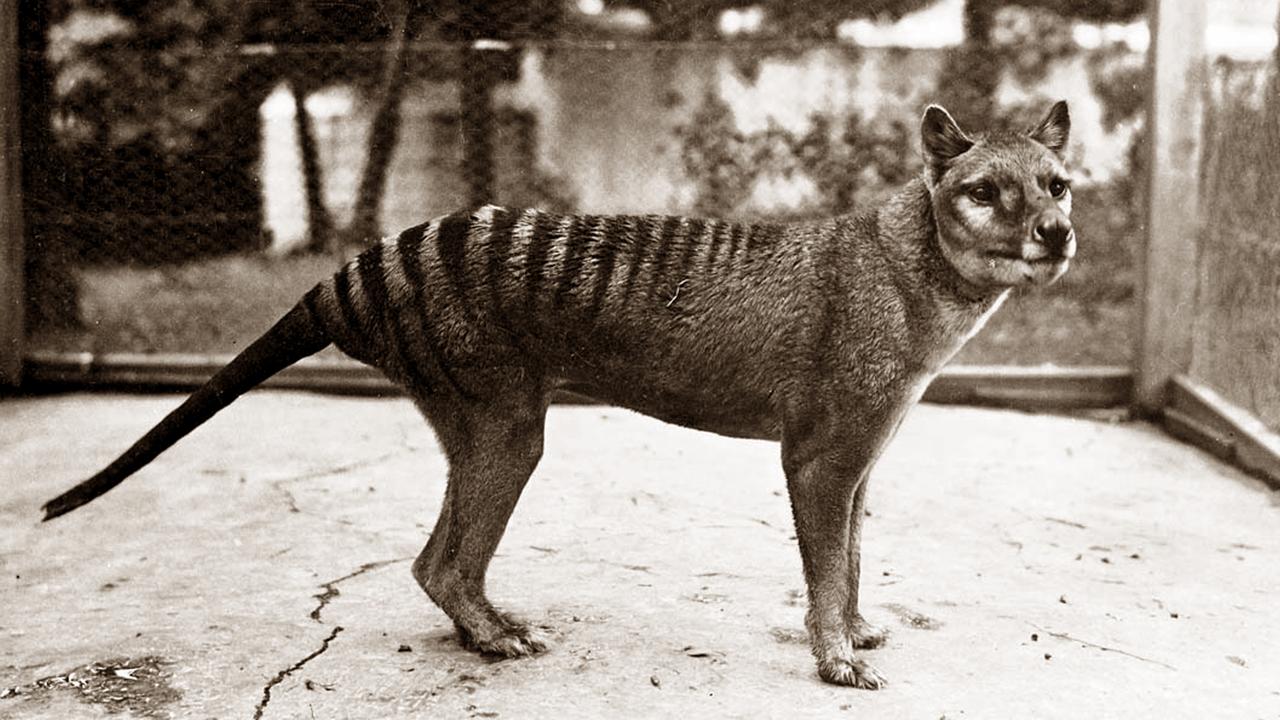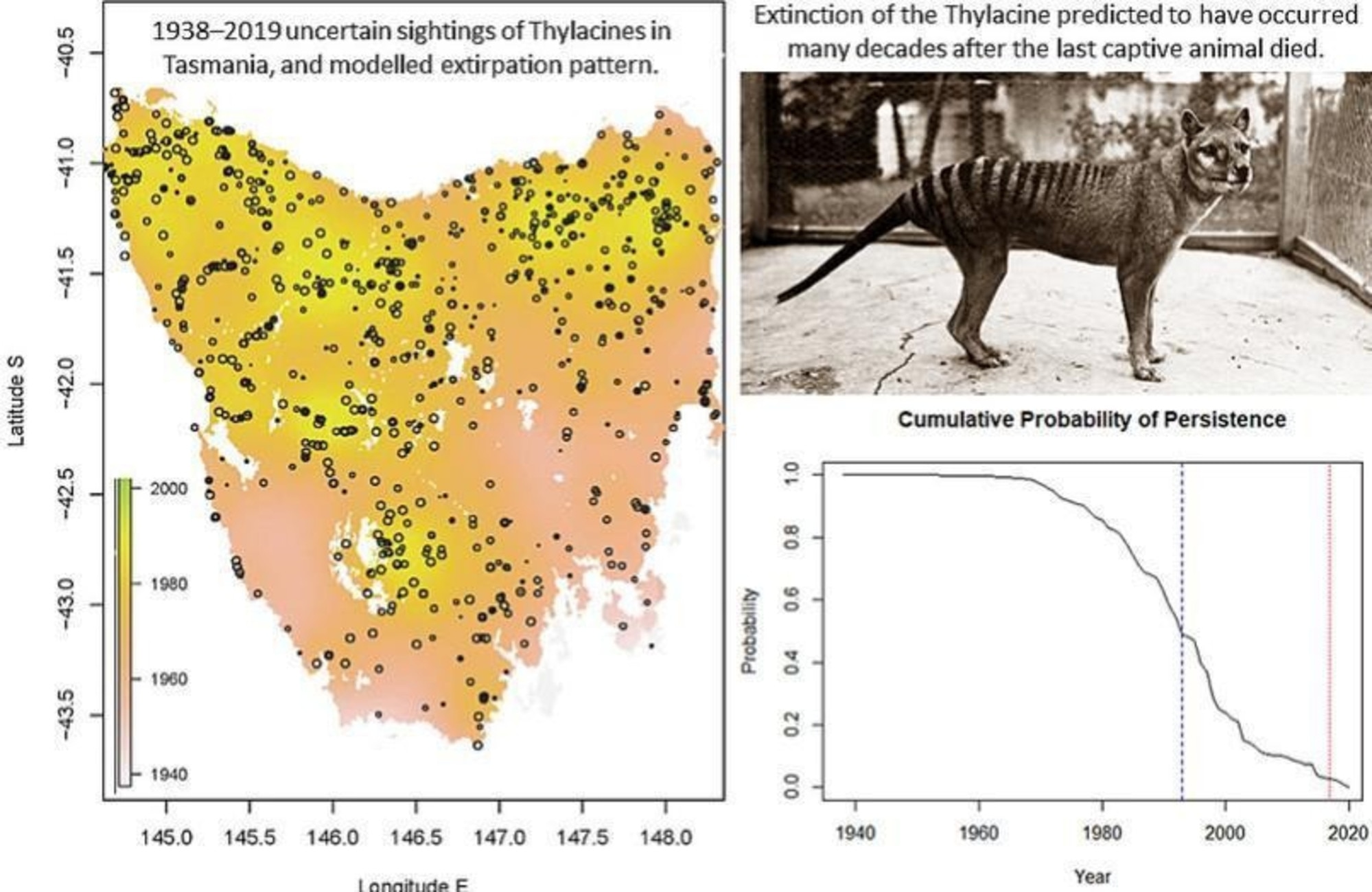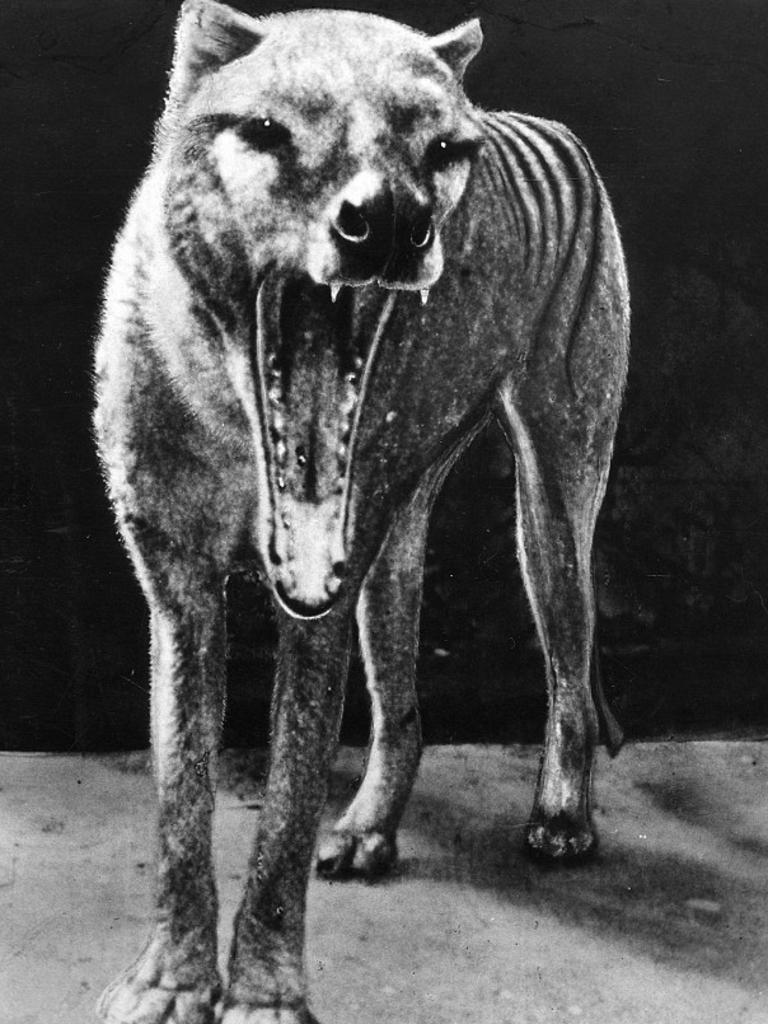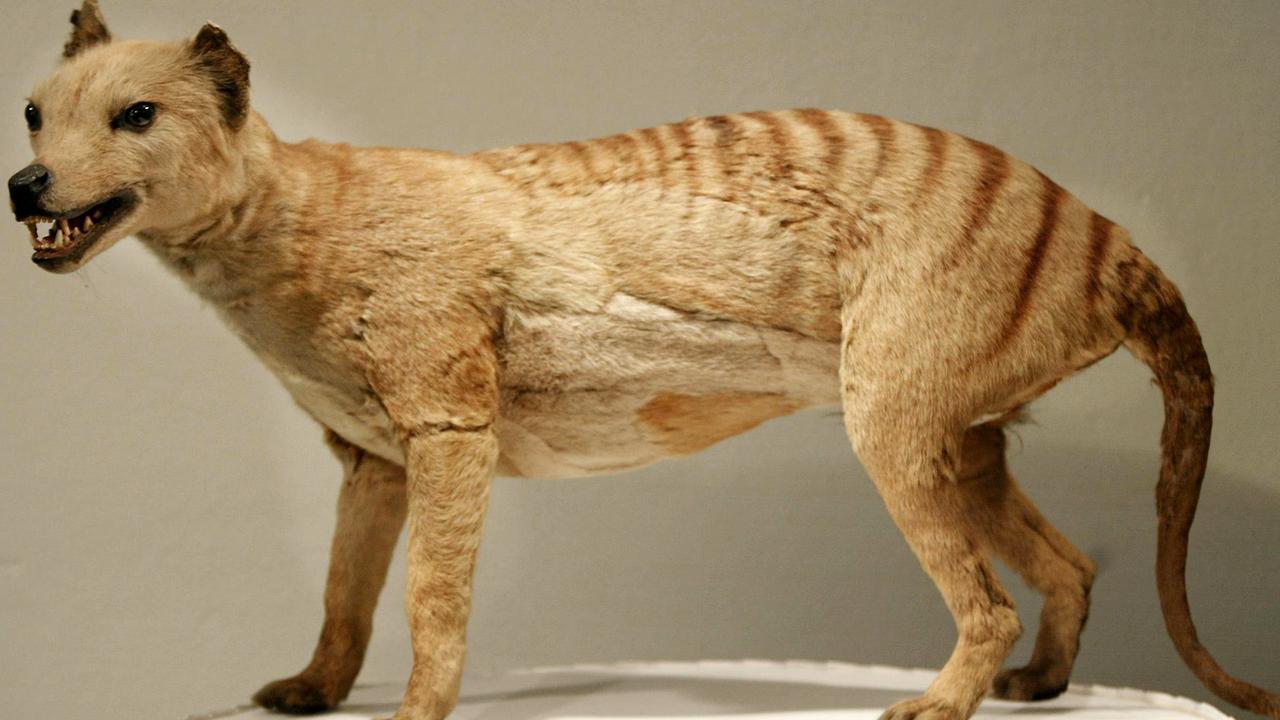University of Tasmania study mapped decline of the Tasmanian tiger, finding a possibility it may still exist
A new study has found there is a chance the Tasmanian tiger — believed to be extinct — could still be living in the wild

READING LEVEL: GREEN
A team of international* researchers has claimed there is “a very small chance” the thylacine — known as the Tasmanian tiger — still exists in the remote Tassie wilderness*.
A new study, led by University of Tasmania professor of environmental sustainability Barry Brook, used a comprehensive* database of 1237 observational* records from Tasmania, dating from 1910 onwards, to map the species’ decline and eventual extinction*.
“We found that the thylacine's distribution shrank rapidly after a period when bounties were provided for animal skins across Tasmania (1888-1909), and that the most likely location of the last surviving subpopulation* was in the southwestern region,” Professor Brook said.

The team also estimated the most likely extinction date for the species, using uncertainty modelling and sensitivity analysis.
“The results showed that extinction likely occurred within four decades after the last capture, so around the 1940s to 1970s,” he said.
“But we found, through further analysis, that extinction might have been as recent as the late 1980s to early 2000s, with a very small chance that it still persists in the remote southwestern wilderness areas.”

Professor Brook said this study provided the most comprehensive and rigorous* analysis of the thylacine’s extinction to date.
“We used a novel approach to map the geographical* pattern of its decline across Tasmania, and to estimate its extinction date after taking account of the many uncertainties*,” he said.
“Our findings not only shed new light on the fate of this iconic* species, but also demonstrate a useful method for conservation* prioritisation and search efforts for other rare species of uncertain status.”

Co-author Dr Stephen Sleightholme, from the International Thylacine Specimen Database, said the thylacine was one of the most fascinating and enigmatic* animals of modern times.
“It has captivated the public’s imagination for decades and inspired many efforts to prove its ongoing existence. Our study shows that there is still much to learn about its history and ecology.”
GLOSSARY
- international: relating to, affecting, or involving two or more nations
- thylacine: a large carnivorous marsupial believed to be extinct. Also known as the Tasmanian tiger or Tasmanian wolf
- wilderness: a place influenced by the forces of nature, where people visit, but do not live
- comprehensive: including everything or almost everything; wide in range
- observational: the act of careful watching and listening
- extinction: the complete disappearance of a species from Earth
- subpopulation: a population that is part of a larger population
- rigorous: extremely carefully and precisely
- geographical: about Earth’s land, water, air, and living things
- uncertainties: to be unsure of something
- iconic: widely recognised and well-established
- conservation: the protection of things found in nature
- enigmatic: difficult to interpret or understand; mysterious
EXTRA READING
Calf’s ‘unherd’ of smiley face marking
Fishermen help free a shark in need
QUICK QUIZ
- What chance do scientists say there is of Tasmanian tigers still living in the wild?
- Why did Tasmanian tiger populations shrink rapidly from 1888-1909?
- When do researches think the extinction was likely to have occurred?
- Professor Brook said this study provided what?
- What else could the method used to study thylacine decline be applied to?
LISTEN TO THIS STORY
CLASSROOM ACTIVITIES
Detective Fact File
Be a detective and create a missing species report card on the thylacine (also known as the Tasmanian tiger). Use as much information as you can from the Kids News article to fill out your missing species report. The report will be forwarded to fellow detectives all around Tasmania and Australia so the more information you give the better.
MISSING SPECIES REPORT:
Name of species:
Scientific name:
Description of species:
Last reported sighting:
Habitat:
Geographical region:
Reason for population decline:
Other notes to help find any remaining species:
Time: allow 30 minutes to complete this activity
Curriculum Links: English, Science, Personal and social, Critical and creative thinking
2. Extension
What hope or percentage do you think there is of the thylacine still in existence today? How do you think scientists and experts could find out for sure if there are any of these species left in the wild?
Time: allow 15 minutes to complete this activity
Curriculum Links: English, Science, Personal and social, Critical and creative thinking
VCOP ACTIVITY
To sum it up
After reading the article, use your comprehension skills to summarise in a maximum of three sentences what the article is about.
Think about:
What is the main topic or idea?
What is an important or interesting fact?
Who was involved (people or places)?
Use your VCOP skills to re-read your summary to make sure it is clear, specific and well punctuated.


